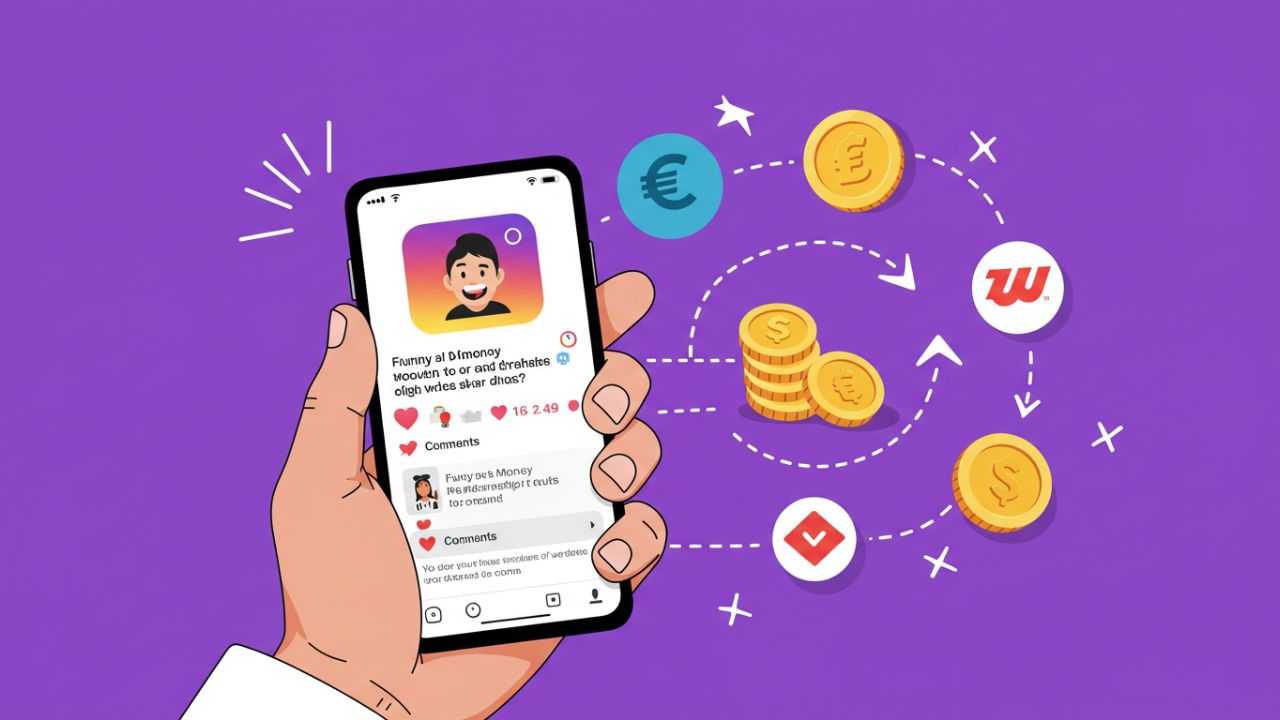The meme economy has evolved far beyond its humble beginnings. What started as humorous images shared among friends has transformed into a multi-million dollar industry, with top meme accounts wielding influence comparable to that of celebrities. As these accounts build massive followings, brands are lining up to collaborate. But how exactly do meme pages convert likes and laughs into real revenue through partnerships?
In this article, we’ll explore how meme accounts make money with brand deals, affiliate marketing, sponsored content, and more. We’ll dive deep into the mechanics of monetization, strategies for scaling, and the subtle art of keeping content engaging while promoting products. Whether you’re a meme creator or just curious about this fascinating niche of influencer marketing, this guide unpacks it all.
1. The Rise of Meme Accounts as Influencers
Meme accounts have become the new influencers. Their content is relatable, highly shareable, and often goes viral. Unlike traditional influencers who focus on lifestyle, beauty, or fitness, meme pages speak in the language of internet culture — sarcasm, irony, and humor.
Many meme accounts have amassed millions of followers on platforms like Instagram, TikTok, and Twitter (now X). These pages build communities based on trust, inside jokes, and a shared worldview. And brands want in.
Why Brands Love Meme Pages
- High Engagement Rates: Memes naturally encourage likes, shares, and comments.
- Organic Feel: Sponsored memes feel less intrusive than traditional ads.
- Gen Z and Millennial Audiences: These demographics are often hard to reach through conventional media.
2. How Partnerships Work
Sponsored Posts
The most direct way meme accounts earn is through sponsored posts. A brand pays the account to create and post a meme that subtly (or sometimes blatantly) features their product or service.
- Example: A dating app may sponsor a meme about awkward first dates.
- Format: The meme fits the account’s usual tone and format but integrates the brand.
- Disclosure: FTC requires clear labeling (e.g., #ad or #sponsored), though enforcement varies.
Affiliate Marketing
Meme pages often use affiliate links to earn commissions. These are especially effective in Instagram Stories (with swipe-up or link stickers) and bio links.
- Example: A meme account promoting a quirky T-shirt with a discount code.
- Tracking: Unique links or discount codes track conversions.
Brand Ambassadorships
Some accounts secure long-term deals, becoming recurring partners with brands.
- Benefits: Predictable income, deeper collaborations, better alignment.
- Example: An account known for dog memes may consistently promote a pet food company.
3. Finding and Negotiating Brand Deals
How Brands Find Meme Accounts
- Influencer Marketplaces: Platforms like Collabstr, Upfluence, and AspireIQ.
- Outreach Teams: Brands or agencies directly message meme pages.
- Networking: Meme creators share contacts and opportunities.
Pitching to Brands
Some meme accounts actively pitch to brands. A compelling pitch includes:
- Stats: Followers, engagement rates, demographics.
- Examples of past partnerships.
- Meme ideas tailored to the brand.
Negotiating Rates
Rates vary based on:
- Follower count
- Engagement rate
- Niche
- Platform
A meme account with 500k followers might charge $500–$3,000 per post depending on the above factors.
4. The Art of Integrating Brands Into Memes
Keeping It Funny
Successful sponsored memes are seamless. They prioritize humor and relevance over hard selling.
- Example: A meme about online shopping anxiety sponsored by a payment security app.
Testing Formats
Some accounts test different formats to see what performs best:
- Carousel memes
- Reels or TikToks
- Polls or quizzes in Stories
Avoiding Audience Alienation
Transparency and subtlety are key. Overloading a meme account with ads can lead to unfollows.
5. Legal and Ethical Considerations
Disclosures
Per FTC guidelines, influencers must disclose sponsored content clearly. This applies to meme accounts as well.
- Use labels like #ad or “Paid partnership with [brand]”
Copyright Issues
Meme accounts often reuse popular images, which can be risky.
- Best Practice: Use royalty-free images or original content.
Platform Policies
Violating terms of service (e.g., too many ads, false claims) can lead to bans or demonetization.
6. Tools and Platforms Meme Accounts Use
Scheduling and Analytics
- Tools: Later, Hootsuite, Buffer.
- Use: Plan posts, measure engagement, A/B test content.
Monetization Platforms
- Collabstr: Connects brands with meme creators.
- Buy Me a Coffee / Ko-fi: Monetize loyal followers directly.
- Shopify / Printful: Sell merch like mugs, shirts with meme prints.
7. Case Studies
Case Study 1: @Daquan
- Followers: 16M+
- Strategy: Viral meme content with occasional brand deals.
- Revenue: Partnered with Netflix, Popeyes, and more.
Case Study 2: @Memezar
- Followers: 10M+
- Strategy: High-frequency posting, collaborations with startups.
Case Study 3: @MyTherapistSays
- Followers: 7M+
- Strategy: Female-focused humor with fashion and beauty brand partnerships.
8. Challenges and Pitfalls
Algorithm Changes
Meme pages are at the mercy of platform algorithms. A sudden drop in reach can hurt revenue.
Burnout
Running a meme account is creatively demanding. Constant posting can lead to fatigue.
Audience Sensitivity
Audiences may be sensitive to the type of brands promoted, especially if they’re seen as inauthentic.
9. The Future of Meme Monetization
The rise of AI-generated memes, NFTs, and decentralized social networks may open new monetization pathways.
- AI Tools: Automate meme creation, test engagement.
- Meme Coins: Crypto-based rewards for viral content.
- Web3 Partnerships: Collaborations with decentralized apps.
Conclusion
Meme accounts are powerful players in modern digital marketing. Through clever partnerships, these pages turn humor into a business. The key lies in balancing authenticity with promotion, maintaining audience trust, and staying agile in the face of rapid changes in platform dynamics.
If you’re a meme creator, now is the time to take your content seriously — because your next post could be both hilarious and highly profitable.

Leave a Reply